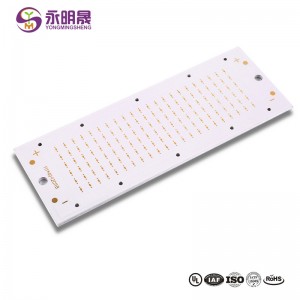10 Warstwa Wysoka Tg Immersion złota boad | YMS PCB
Bezprądowego niklu lub zanurzenie złota (99,9 procent Gold)
▪ Zwykle grubość wynosi 0,08 urn lub 0.000003 cala do 0,2 mikrometrów 0.000008 cala PozĹ,acany 0,5 um lub 0,0002 cala niklu
▪ Doskonała odporność przed korozją
▪ odpowiednia dla aluminiowego drutu wiązania
▪ bardzo dobre dla wykorzystania technologii skoku drobnym
▪ Superior zdolność do lutowania
▪ Bardzo dobry okres trwałości
In PCI and light module, line socket, a large number of use of goldfinger, goldfinger has been divided into: long goldfinger, broken section goldfinger, split goldfinger;
Goldfinger plate in the process of processing, need to pull the gold-plated wire, conventional goldfinger processing process is relatively simple, long and short goldfinger, the goldfinger leads need to be strictly controlled, need to complete the second etching.
It is more difficult to break the section of goldfinger than the length of the goldfinger, requiring dry film 3 times of process, the lead does not remain 4 times to complete the goldfinger production, often 90% of the goldfinger control is unable to process.
YMSPCB processing plug goldfinger and short and short goldfinger, broken section goldfinger, master the core manufacturing technology, single goldfinger gold-plated thickness up to 50U gold, industrial graphics card PCI can be processed to 50U gold;
Gilding is called hard gold. Why does goldfinger need gilding?
Because of the use of graphics card and plug, often circuit board often need to plug, gold-plated is the hardware, plug up to 200,000 times;
Shen jin is software, the number of plug and insert is limited, each plug and insert will reduce the life of goldfinger;
Gold plating is hard gold, in the extraction of gold, gold in the process of extraction of hardness, gold plating in the extraction of excellent performance, conductive performance can improve the efficiency of conduction.
Możesz polubić:
2、Introduction of gold-plating process of PCB goldfinger
3、Soldered FPC gold finger design tips
4、Introduction to 9 common problems in PCB production








